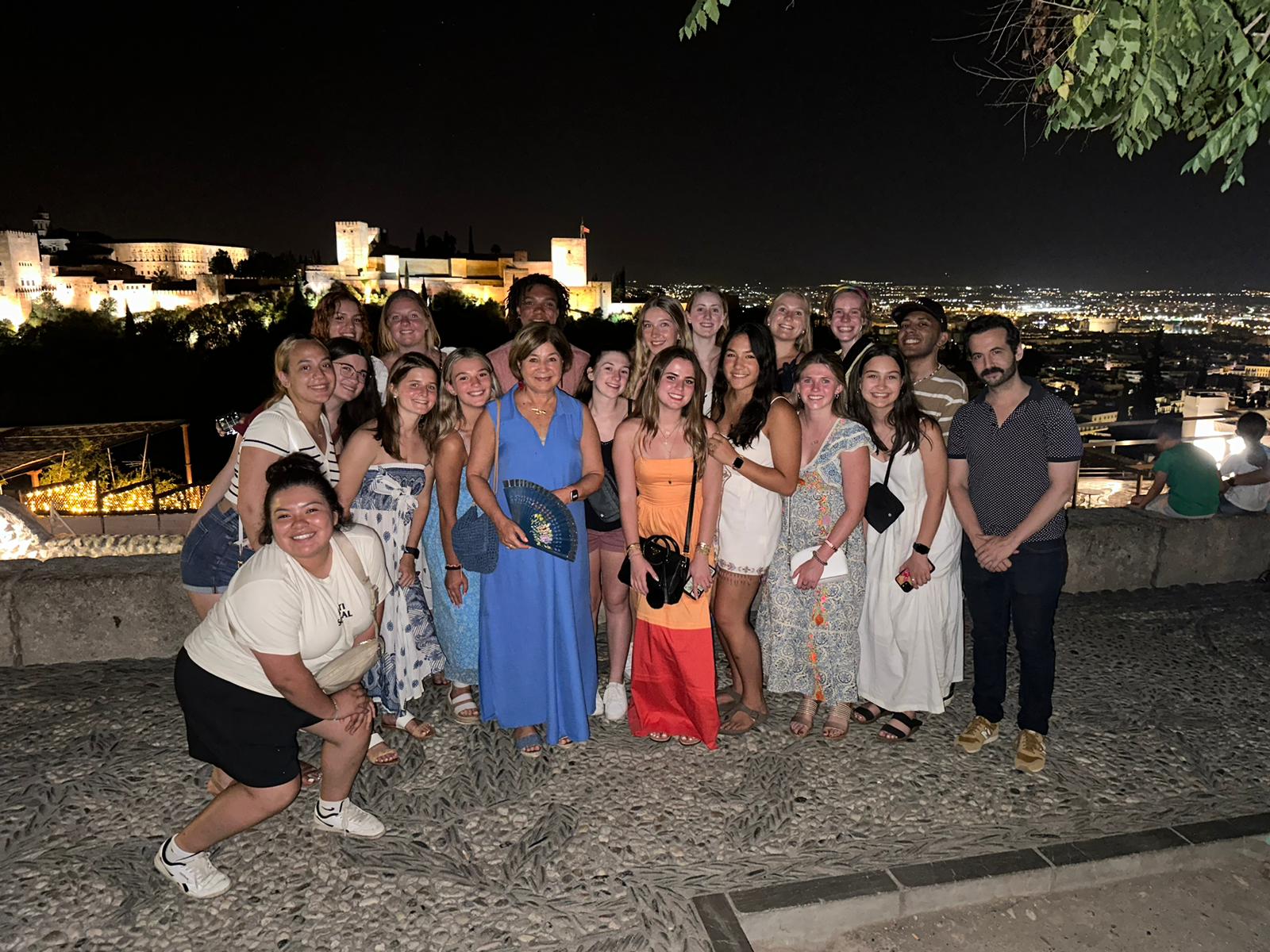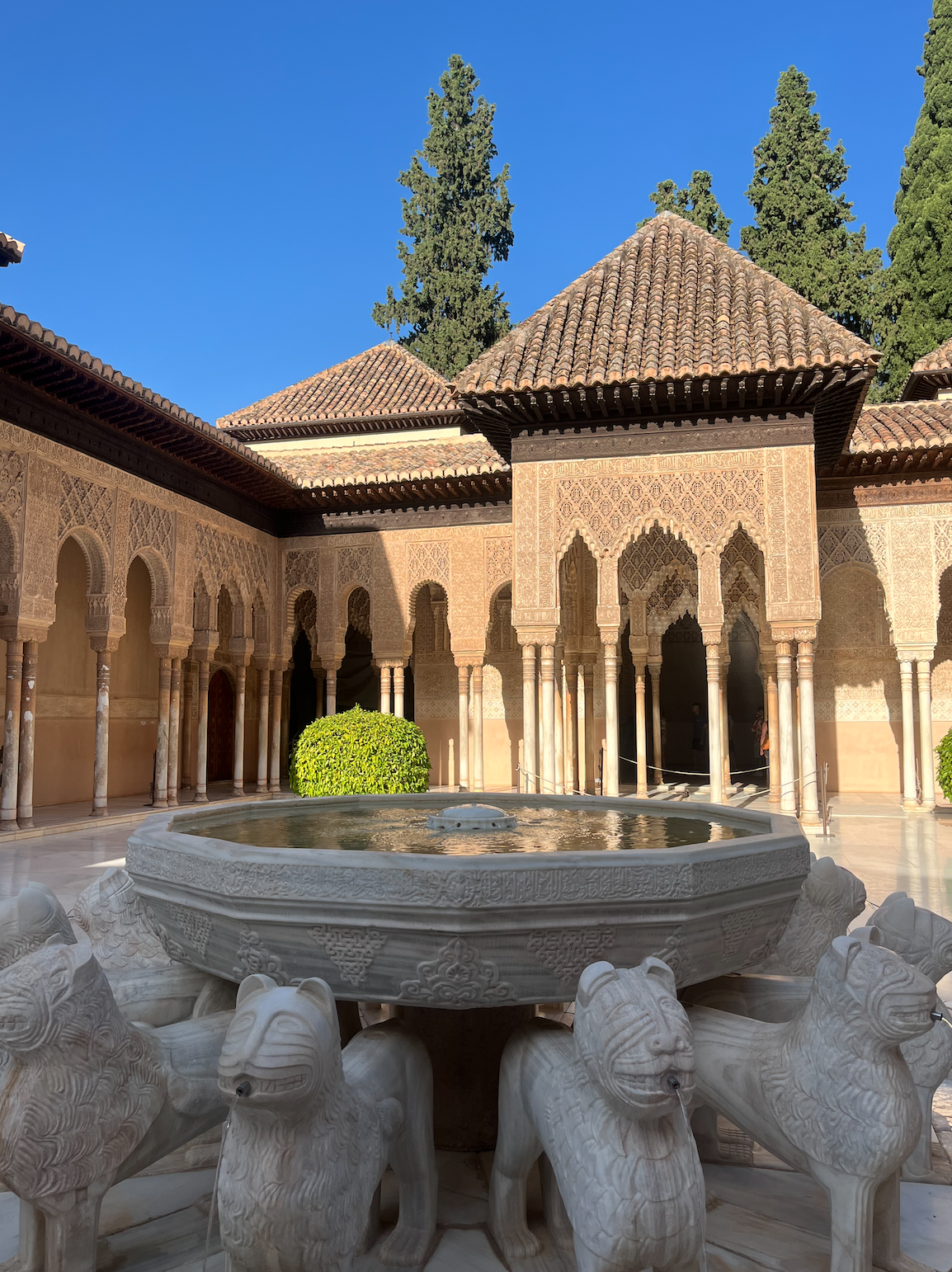Written By: Nicole Pimentel ’24 (Session 2)
I was very excited to travel to Granada, because I have many friends who have studied abroad here and loved the city and their experience. In addition, Professor Lokos has been hyping up the Alhambra since Day 1, which has truly made me so excited! We arrived to Granada on Sunday, and in the afternoon, we visited the Royal Chapel. The Royal Chapel is home to the graves of Queen Isabella of Castile, King Ferdinand of Aragon, their daughter Joanna and her husband Philip, and their grandson Miguel. I was truly amazed when Professor Juan Iso informed me of the story behind Miguel. I was surprised to see the tomb so small but it was interesting to have learned that Miguel would have united the thrones of Europe if he had lived. Miguel is considered “The failed hope of a completed union,” and he would have been the King of Portugal, Aragon, and Castile. Another fact I learned was that the Catholic kings initially intended to be buried in Toledo, but after the reconquest, they decided to have the Royal Chapel constructed in Granada. With its intricate Gothic and Renaissance architecture, adorned with delicate stone carvings and dazzling stained-glass windows, the chapel showcases a blend of artistry, making it a true gem of historical and architectural significance. Visiting the Royal Chapel is not just a tour of architectural wonders; it is an immersion into the heart and soul of Spanish history. The chapel holds a trove of stories waiting to be discovered, tales of triumphs and challenges faced by the Catholic Monarchs as they sought to unite Spain and reshape its destiny.

We visited the Alhambra on the second day of our Granada trip. In the morning, we visited the Alcazar, which had the most beautiful and amazing views of Granada, I was truly amazed. The moment you set foot within the Alhambra’s walls, you are transported to a world of enchantment and wonder. The intricate Islamic architecture, with its exquisite arabesques, delicate stucco work, and mesmerizing tile mosaics, bears witness to the skilled craftsmanship of the Nasrid dynasty that once ruled these lands. The renowned Nasrid Palaces and the ruins of the nobles’ and peasants’ homes can also be found here. Next, during our morning visit, we headed to the Generalife, the refuge of the Granadine kings, which is a standalone palace in front of the Alhambra that is surrounded by orchards and gardens. I could not believe how beautiful and aesthetic all the gardens were, it felt like it was never going to end and it could last forever. When the Catholic Monarchs captured Granada in 1492, the Alhambra became a Christian court. Later, a number of buildings, including a church, a friars’ monastery, military barracks, and homes for influential people, were constructed. I also learned that the Arabic phrase for “red castle or vermilion” is the source of the name Alhambra, which may have been inspired by the color tone of the towers and walls that entirely encircle the hill of La Sabica, which appear silver under starlight but takes on a golden hue in the sunlight. We came back towards the later afternoon for our final stop at the Alhambra. I felt as if this location and area went by pretty fast, but again, seeing all the architecture continues to amaze me. It reminds me of a comment Professor Lokos made back in Toledo, we are not able to do this today because all the thought, effort, sweat and thought that went into building this cannot be done today truly, and it makes it so unique. When I first arrived in Granada, I did not feel such a strong connection as the other cities, but after visiting the Alhambra and exploring more of the area, it truly captured my attention, and I fell in love (although Toledo truly has my heart).


